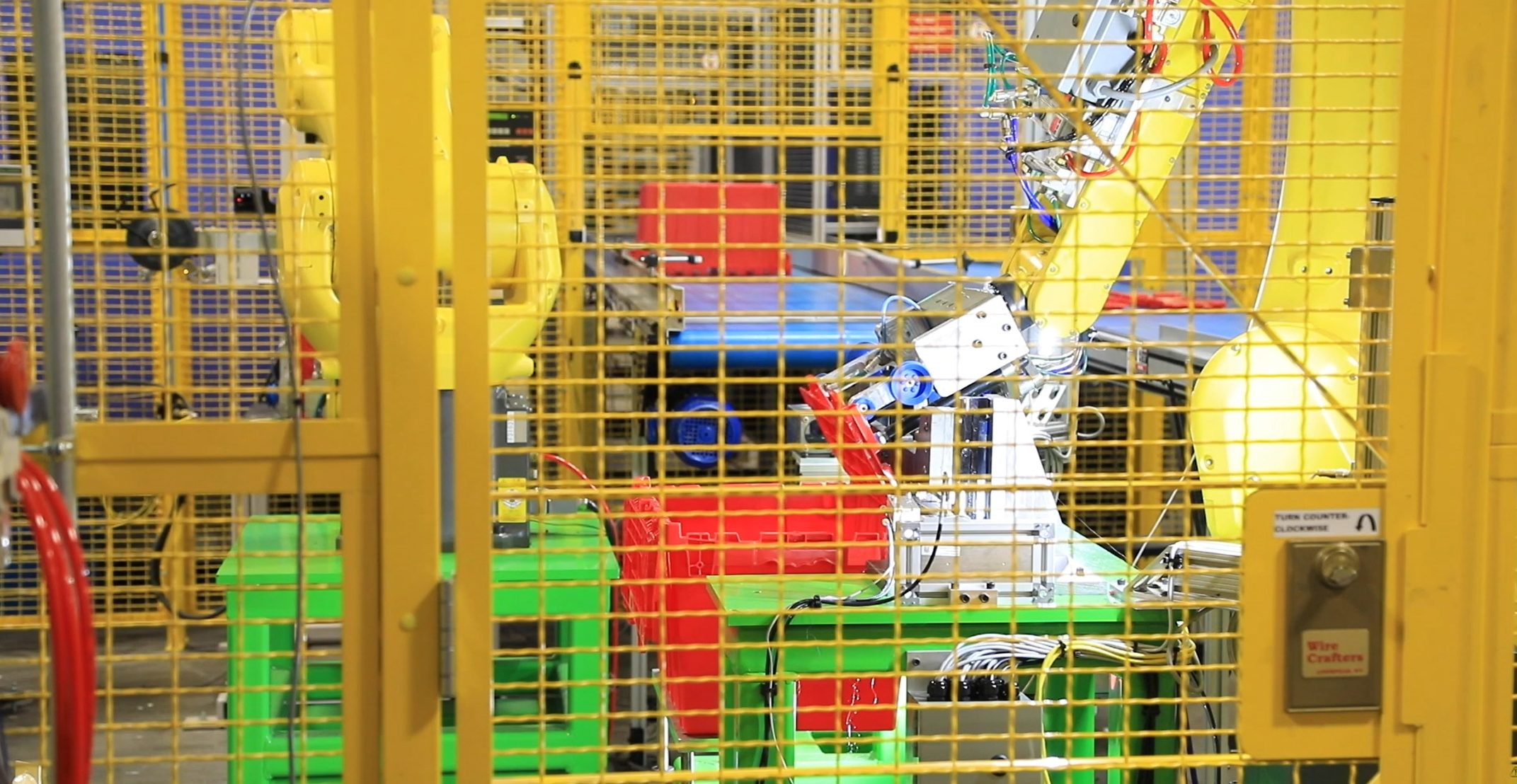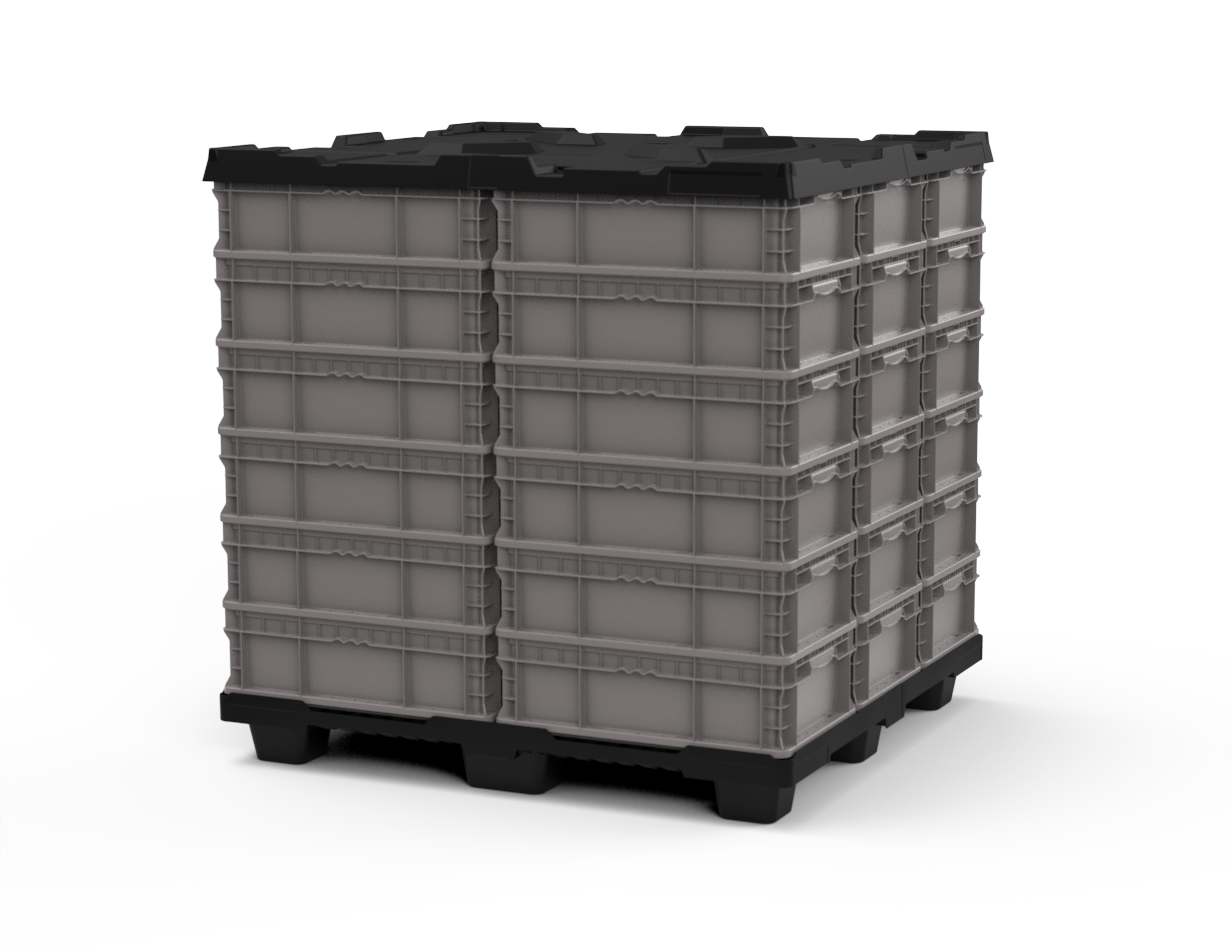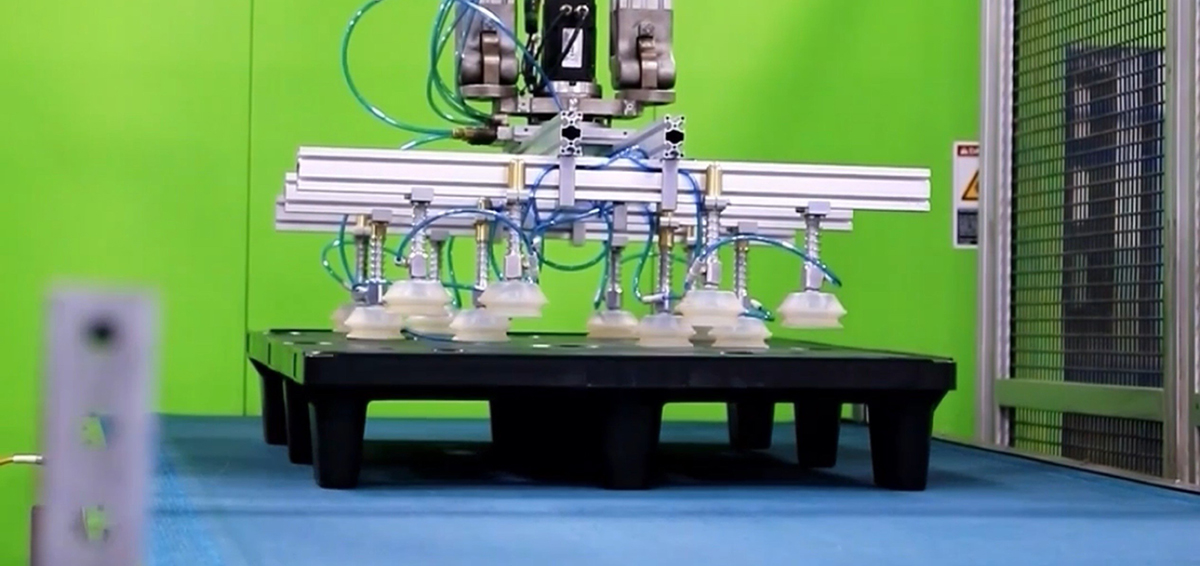Plastic pallets are a staple product used in warehouses and distribution supply chains across the globe. They are designed for different purposes, applications, and industries, but not all pallets are created equal. Below, we review five factors you should consider when evaluating a distribution pallet.
5 Considerations When Selecting the Right Plastic Pallets for Distribution
- Pallet Size
Standard-sized pallets have a GMA (Grocery Manufacturers Association) 48” x 40” footprint and are used throughout the food manufacturing and distribution industries. Other common footprints include the 30” x 42”, popular for direct-to-store applications, and the European standard (EUR1) size of 1200 mm x 1000 mm.
- Load Capacity
Load capacity is how much weight a pallet can support in a given environment. Your pallet load capacity must meet or exceed the weight of the load you plan to put on your pallet. A pallet's load capacity is predominantly influenced by design and material and are commonly evaluated in three ways: static, dynamic, and racking.
- Static Load Capacity measures how much weight a pallet can accommodate while stationary or stacked, while sitting on a warehouse floor, for example.
- Dynamic Load Capacity measures the maximum weight that can be evenly distributed while a pallet is being lifted or moved, usually by a forklift or hand jack.
- Racking Load Capacity is the maximum distributed weight a pallet can hold while in a racking system. With a range of racking types, including supported and non-supported, how much the pallet can handle will depend on the type of racking system available at your facility. It is always best to consult with a professional salesperson to discuss the best pallet for your specific application.
- Pallet Durability
Durability is a significant factor to consider when evaluating the right pallet for an application. Pallets that aren’t designed for heavy loads can break, potentially damaging the product they are carrying or posing a hazard to employees, impacting productivity and workplace safety. Additionally, pallets made of certain materials break more easily than other pallets. For example, structural foam pallets are brittle due to air pockets that are created during manufacturing, so they are more susceptible to breakage and failure.
- Cleanliness
Depending on the product placed on the pallet, or the facility where the pallet is used, some pallet designs or materials are not well suited for the application. For example, facilities in food processing or pharmaceutical manufacturing must adhere to strict cleanliness requirements. Injection molded plastic pallet’s smooth, non-porous surface is resistant to pest infestation and bacteria growth, making them ideal for cleanroom applications.
- Overall Pallet Cost
Selecting the pallet with the lowest upfront cost can be tempting, but if it falls short in areas like the ones we’ve just discussed, you may pay more in the long run. These hidden costs are often incurred in additional freight, efficiency or productivity loss, equipment or product damage, employee injuries, and replacing broken pallets. It may be worthwhile to spend more upfront for a better-performing, longer-lasting pallet that will be more cost-effective over time.
Benefits of Injection Molded Plastic Pallets for Distribution
Injection Molded Plastic pallets are well-known in the distribution industry for their light weight and extreme versatility. They offer durability, are safer, more hygienic, and have a lower cost of ownership than other options.
Durable & Strong
High-pressure injection molded pallets are more durable than many other plastic pallets on the market. They are designed to be impact resistant and can often remain in service even after impact from a fork tine. They also experience significantly less breakage than pallets made of structural foam, another commonly used material in pallet manufacturing.
Safe & Hygienic
High pressure injection molded plastic pallets are smooth and non-porous, making them resistant to microbial growth, chemical contamination, and pest infestation. Many plastic distribution pallets are also designed to be easily washed and put back into use quickly. And because plastic pallets are lightweight, won’t splinter, and don't contain sharp metal, they are safer for employees who work with and handle them every day.
Sustainable
Plastic pallets have a much longer lifespan than pallets made from other materials. Once they reach the end of their life, they can be easily recycled for use in new products. Plastic pallets can also be manufactured using recycled material. This helps to reduce waste and ensure a more sustainable packaging system.
Cost-Effective
Injection molded plastic pallets are light weight and manufactured using less material, resulting in freight savings beginning with their first delivery. While plastic pallets may carry a higher upfront cost, it is quickly recouped for most facilities through improved operational efficiency, reduced product damage, and longer service life. Customers quickly realize the upfront investment in injection molded plastic pallets, and ROI is easily seen.
Why Monoflo for Plastic Pallets for Distribution
An Industry Leader
Monoflo’s continued investment in technology allows us to deliver a superior, more reliable pallet that sets us apart from our competition. We hand select only the best-in-class robotics and machinery to automate our manufacturing processes and optimize efficiency. This translates into cost savings that enable us to provide better performing, premium-quality pallet at a competitive price.
Industry Experts
Monoflo employs a curated team of experienced, highly-trained engineers and designers, as well as industry experts with a deep understanding of our customers’ business. Our team provides individualized attention to help our customers optimize their packaging strategy and overcome challenges they’re facing.
Wide Variety & Customization Options
Monoflo’s high-pressure injection molded pallets offer the highest strength-to-weight ratios, making them perfect for the distribution industry. Our pallet product lines include Welded and Non-Welded Nestable Pallets, as well as Rackable and Stackable Pallets.
- Nestable 48” x 40” Injection Molded Welded G2 Pallet has a two-piece welded design with enhanced internal deck ribbing that delivers strength and durability with low tare weight, offering superior handling of heavier loads.
- Nestable 48” x 40” Injection Molded Pallet This nestable plastic pallet is designed around a footprint for GMA applications. This pallet is designed for storage or shipment of distribution and retail goods, as well as high-end export needs.
- Nestable 1200 mm x 1000 mm Injection Molded Pallet is designed around an EUR 2 footprint, an international standard. It is a one-piece, high-pressure injection molded pallet, and its slightly smaller footprint lends itself to retail applications.
- Nestable 30” x 42” “Half” Pallet is an ideal pallet for retail and direct store delivery applications. It is specifically designed to fit through a standard doorway, and pallet’s lightweight design and ergonomic handles improve handling safety and efficiency.
All of the pallets mentioned above are 100% recyclable and available in recycled material.
If you're looking for plastic pallets for distribution, Monoflo has what you're looking for. Our wide variety of pallets are designed to suit your application requirements, and our industry experts can help you identify the most effective solution to address your performance needs. For more information or to check out our plastic pallet products, get in touch with our team today.


